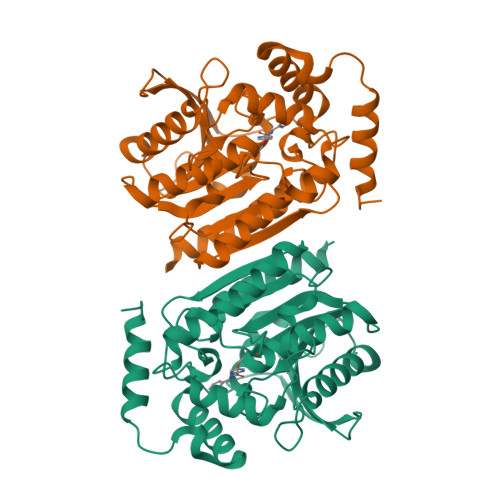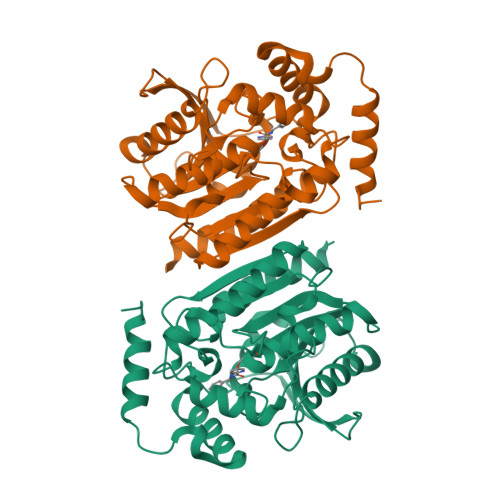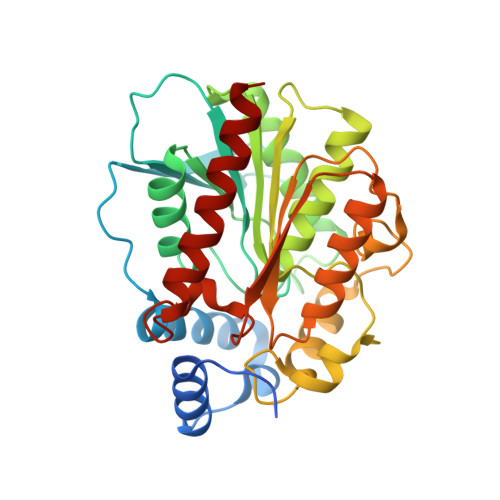Biocatalytic Heteroaromatic Amide Formation in Water Enabled by a Catalytic Tetrad and Two Access Tunnels.
Zukic, E., Mokos, D., Weber, M., Stix, N., Ditrich, K., Ferrario, V., Muller, H., Willrodt, C., Gruber, K., Daniel, B., Kroutil, W.(2024) ACS Catal 14: 8913-8921
- PubMed: 38868102
- DOI: https://doi.org/10.1021/acscatal.4c01268
- Primary Citation of Related Structures:
8OIM, 8P7E, 8P8F - PubMed Abstract:
The amide moiety belongs to the most common motives in pharmaceutical chemistry, present in many prescribed small-molecule pharmaceuticals. Methods for its manufacture are still in high demand, especially using water/buffer as a solvent and avoiding stoichiometric amounts of activation reagents. Herein, we identified from a library of lipases/esterases/acyltransferases and variants thereof a lipase originating from Sphingomonas sp. HXN-200 (SpL) able to form amides in aqueous solution starting from a broad scope of sterically demanding heteroaromatic ethyl esters as well as aliphatic amines, reaching isolated yields up to 99% on preparative scale and space time yields of up to 864 g L -1 d -1 ; thus, in selected cases, the amide was formed within minutes. The enzyme features an aspartate next to the canonical serine of the catalytic triad, which was essential for amide formation. Furthermore, the enzyme structure revealed two tunnels to the active site, presumably one for the ester and one for the amine, which permit the bringing together of the sterically demanding heteroaromatic esters and the amine in the active site. This work shows that biocatalytic amide formation starting from various five- and six-membered heteroaromatic ethyl esters in the buffer can serve as a platform for preparative amide synthesis.
Organizational Affiliation:
Austrian Centre of Industrial Biotechnology Acib GmbH c/o University of Graz, Heinrichstrasse 28, 8010 Graz, Austria.



















